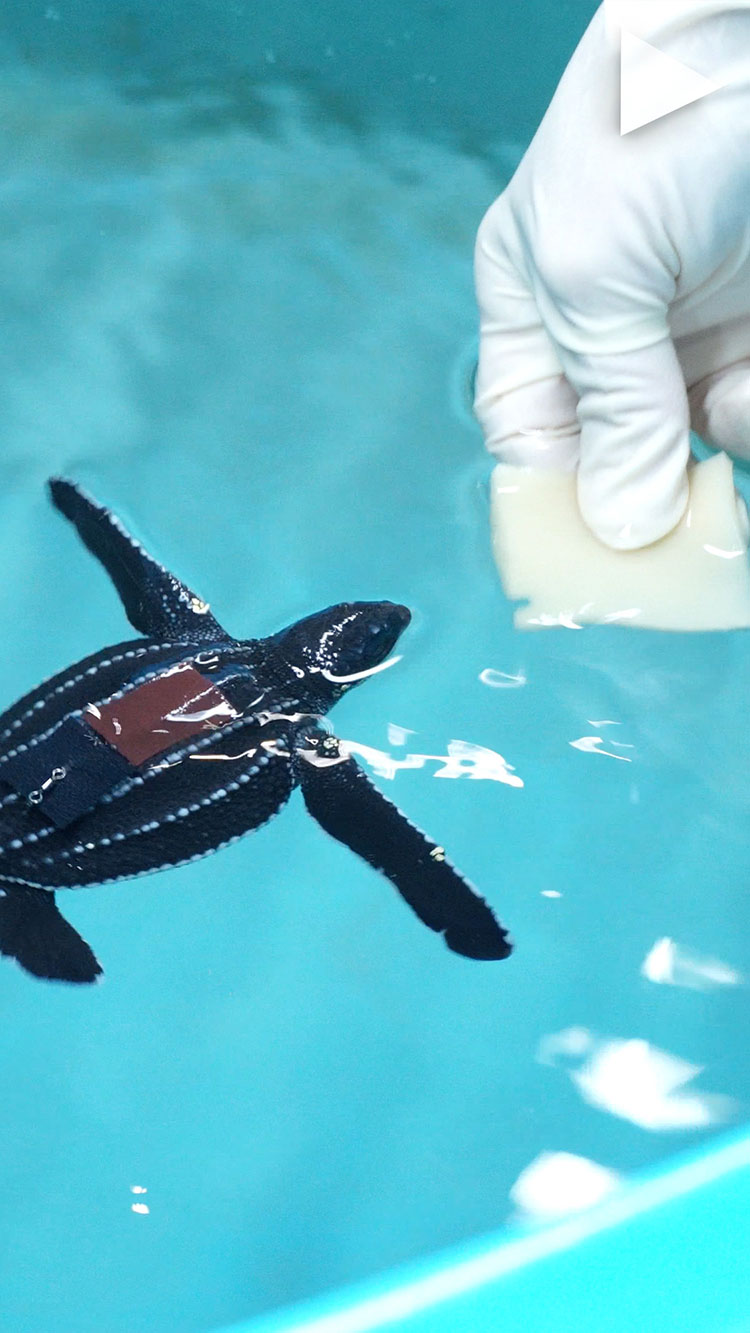1/10/2024
Tracking Turtles
How a Changing Climate Affects Sex Ratios in Sea Turtles
Hot chicks and cool dudes.
That’s the adage for predicting the eventual sex of a developing sea turtle. Unlike humans, whose sex is determined by chromosomes, sea turtle sex is determined largely by the environmental factors that the eggs experience during incubation. Most notably, warmer temperatures produce more females while cooler temperatures produce more males. As temperatures warm due to climate change, hatchlings are trending toward an all-female population.
"The shift in our climate is shifting turtles as well, because as the temperature of their nests change, so do their sex ratios," said Jeanette Wyneken, Ph.D., professor of biological sciences in FAU’s Charles E. Schmidt College of Science.
The effects of the warming climate on the sea turtle population can be seen in real time on the beaches along Florida’s Southeast Coast. At the close of the 2022 sea turtle nesting season, the FAU Marine Lab, which is led by Wyneken, found an overwhelming majority of female hatchlings.
- Green Turtles: Female 88% vs. Male 12%
- Leatherback: Female 70% vs. Male 30%
- Loggerhead: Female 86% vs. Male 14%
These sex ratios are moderately female skewed compared to most previous years.
Studies – including one published earlier this year by Florida Atlantic researchers –shown that temperature also affects hatchling performance. FAU’s study of leatherback hatchlings found that those hatched from hotter nests had a harder time righting themselves and had shorter flippers.
Other factors, like moisture in the nest, also play a role in determining the sex of a sea turtle. "During incubation, the turtle embryo grows inside the egg from a few cells to a fully formed and independent organism at hatching," Wyneken said. "For proper development, embryos require an appropriate range of temperature, moisture, salinity and respiratory gases."
When more moisture is present, it cools the temperature of the nest. Nest conditions that are too hot and too dry can essentially kill any viabile eggs, often of the entire clutch.
Sea turtles can take 20 to 30 years to reach sexual maturity, so the impacts of current nest conditions likely will not be seen for years. One key impact of the reduction in male production as well as whole clutches dying during the middle of the season can be the loss of genetic diversity. Genetic diversity is the essential resource that allows for adaptions to changing condition. Losses of genetic diversity and their impact are yet to be determined. But the trend toward fewer mating pairs leaves scientists like Wyneken uneasy about the future.
"If climatic changes continue to force the sex ratio bias of [sea turtles] to even greater extremes, we are going to lose the diversity of sea turtles as well as their overall ability to reproduce effectively. Sex ratios are already strongly female-biased," Wyneken said. "That’s why it’s critical to understand how environmental factors, specifically temperature and rainfall, influence hatchling sex ratios."
If you would like more information, please contact us at dorcommunications@fau.edu.

Jeanette Wyneken, Ph.D.
Charles E. Schmidt College of Science
Watch video
